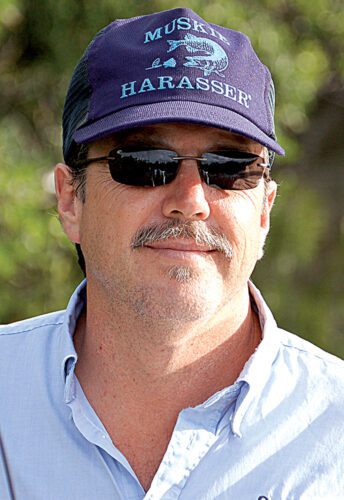How to fish occasional cold snaps

Capt. George Tunison
A check of today’s FWC red tide sampling map showed small patches mostly along the barrier islands and a few spots in Pine Island Sound which compared to previous weeks looks great. With migrating tarpon soon arriving from the south, the last thing we need is another red tide event coating the coastline. Wednesday’s cold and windy front sent chills down the spines of local snook that have been enjoying the unseasonably warm temps as they slowly make their way to local beach fronts. A warm-up for late Thursday and Friday, then another small cold front hits us for the weekend adding further challenges to the angling puzzle.
Sunday promises to be chilly but Southwest Florida cold fronts typically come and go rather quickly and a warm-up should be back in effect Monday although after Sunday’s temperature plunge, Monday could be tough fishing inshore.
What does the novice do to combat inshore cold front conditions? Where did the fish go? Well, they didn’t leave town but relocated to more comfortable waters, usually meaning going deeper like in creeks, channels, marinas, upriver and in wind protected canals. During these times it’s not really necessary to be on the water at first light, rather wait for the warmer afternoon period.
Go to live/dead baits that cold fish don’t have to chase. It’s hard to beat the classic shrimp and popping cork to catch a variety of fish. If you’re a diehard lure slinger, downsize your offerings and use baits that utilize a slow presentation like small suspending twitch baits or slow crawled plastic shrimp. The water is still winter clear so longer leaders made from fluorocarbon get the nod for stealth and abrasion resistance.
One of the most important rules for cold front fishing, and one of the hardest for many to master, is to slow that retrieve. Let that twitch bait suspend right in front of the fish’s nose then add subtle, tiny, rod tip twitches to tease that smart old cold snook into biting. Don’t be in a hurry to rush the lure back to the boat. Quite often folks make great casts to cover then immediately start cranking the lure out away from the cover they tried so hard to cast into. Keep your player in the strike zone for as long as you can.
Fishing slowly is an art requiring patience that many of today’s anglers can’t seem to muster. Try to visualize that plastic shrimp slowly gliding to the bottom, settling into the grass. Let it rest momentarily then give it a short hop and repeat the process all in slow motion. When fishing slowly, especially with imitation shrimp, learn to be a line watcher waiting for the slightest tick, tug or unnatural sideways line movement, which is your cue to rod set that J hook or quickly reel set your circle hook.
Adding commercial scents to artificial baits can add yet another tool in your box to fool chilly lethargic fish. Scouting around using your electronics to check water temps can really pay off as just a few degrees warmer can make a huge difference.
Getting offshore to 80 to 120 feet, expect a variety of fish including red grouper, mangrove and lane snapper, yellowtails and, so far, smaller kingfish. Closer in reefs have been producing some big permit in the 40-pound class along with smaller cobia, mangrove snappers and sheepshead. Don’t be surprised if a really big snook joins the near-shore reef party. The passes have been producing a mix of fish including small snook, reds, baby grouper, Spanish macs and pompano.
Inshore along the east wall of the harbor and north Matlacha Pass you’ll find trout, bonnethead sharks, small snook and different sized redfish. I’m starting to see juvenile tarpon activity in the Spreader Canal while waiting for early reports of adult migrating tarpon coming north for their annual Boca Grande visit.
Capt. George Tunison is a Cape Coral resident fishing guide. You an contact him at 239-282-9434 or via email at captgeorget3@aol.com.

